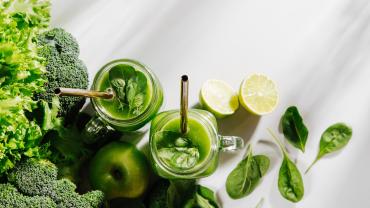
Every day the human body is exposed to hundreds of toxic substances like heavy metals, drugs (pharmaceutical or recreational), household cleaners, pollutants, and endogenous toxicants such as reactive oxygen species. Consequently, every day the human body must perform detoxification through the liver in two phases. Phase I liver detoxification was discussed last week. Phase II liver detoxification is the next step for successful toxin biotransformation and elimination.
After a toxin undergoes phase I detoxification through cytochrome P450 enzymes, it is deemed an “intermediate metabolite” that must be further metabolized by phase II detoxification. Intermediate metabolites are often more toxic than their parent compound. If phase II detoxification pathways are inefficient, the intermediate metabolites may cause cellular damage by binding with various proteins, lipids, or nucleic acids in the cell. Phase II detoxification increases the water-solubility of the toxic metabolites, leading to enhanced and successful excretion in stool and urine.
Phase II conjugating pathways include glucuronidation, sulfation, glutathione conjugation, acetylation, amino acid conjugation, and methylation. Similar to phase I detoxification, genetics can have a considerable influence on phase II conjugating enzyme function. In vivo, clinical and observational studies suggest that many nutrients are required for phase II pathways to function properly and remain balanced with phase I detoxification.
Nutrients may support phase II detoxification in one or two ways. In the first way, the nutrient may beneficially induce or activate the phase II pathways. In the second way, they may be a dietary source of necessary phase II compounds to promote function and efficiency. For example, nutrients or food sources that induce the glucuronidation pathway are cruciferous vegetables, resveratrol (e.g., grapes, wine, peanuts, soy), citrus, dandelion, rooibos tea, rosemary, soy, ellagic acid (e.g., berries, pomegranate, walnuts), ferulic acid (e.g., whole grains, asparagus, olives), curcumin, and astaxanthin. Dietary sources of D-glucaric acid necessary for glucuronidation are legumes, fruits, and vegetables (e.g., oranges, spinach, apples, broccoli, cauliflower, cucumber, lettuce, celery, green pepper, and tomato).
High-quality, bioavailable protein is necessary for the phase II amino acid conjugation pathway, requiring the amino acids glycine, taurine, glutamine, ornithine, and arginine. The glutathione conjugation pathway requires glutathione precursors (cysteine, glutamic acid, and glycine) and the supportive nutrients of N-acetyl cysteine, vitamin B6, magnesium, selenium, folate, and alpha-lipoic acid. The sulfation pathway requires sulfur-rich foods, such as cruciferous vegetables, allium plants (e.g., onions, leeks), poultry, and seafood. The methylation pathway requires methionine, vitamin B12, vitamin B6, betaine, folate, and magnesium. Any of these nutrients may come from dietary sources or through supplementation.
Inefficient detoxification due to genetics, environmental overload, or nutrient deficiencies is potentially associated with various chronic diseases. Suppose any of the phase II conjugating pathways are not functioning optimally. In that case, it may result in a build-up of harmful intermediate metabolites from phase I that could cause adverse effects. A whole-food diet, physical activity, limiting stress, and supplementing with necessary or beneficial phase II nutrients may support liver detoxification and overall health.
By Danielle Moyer, MS, CNS, LDN